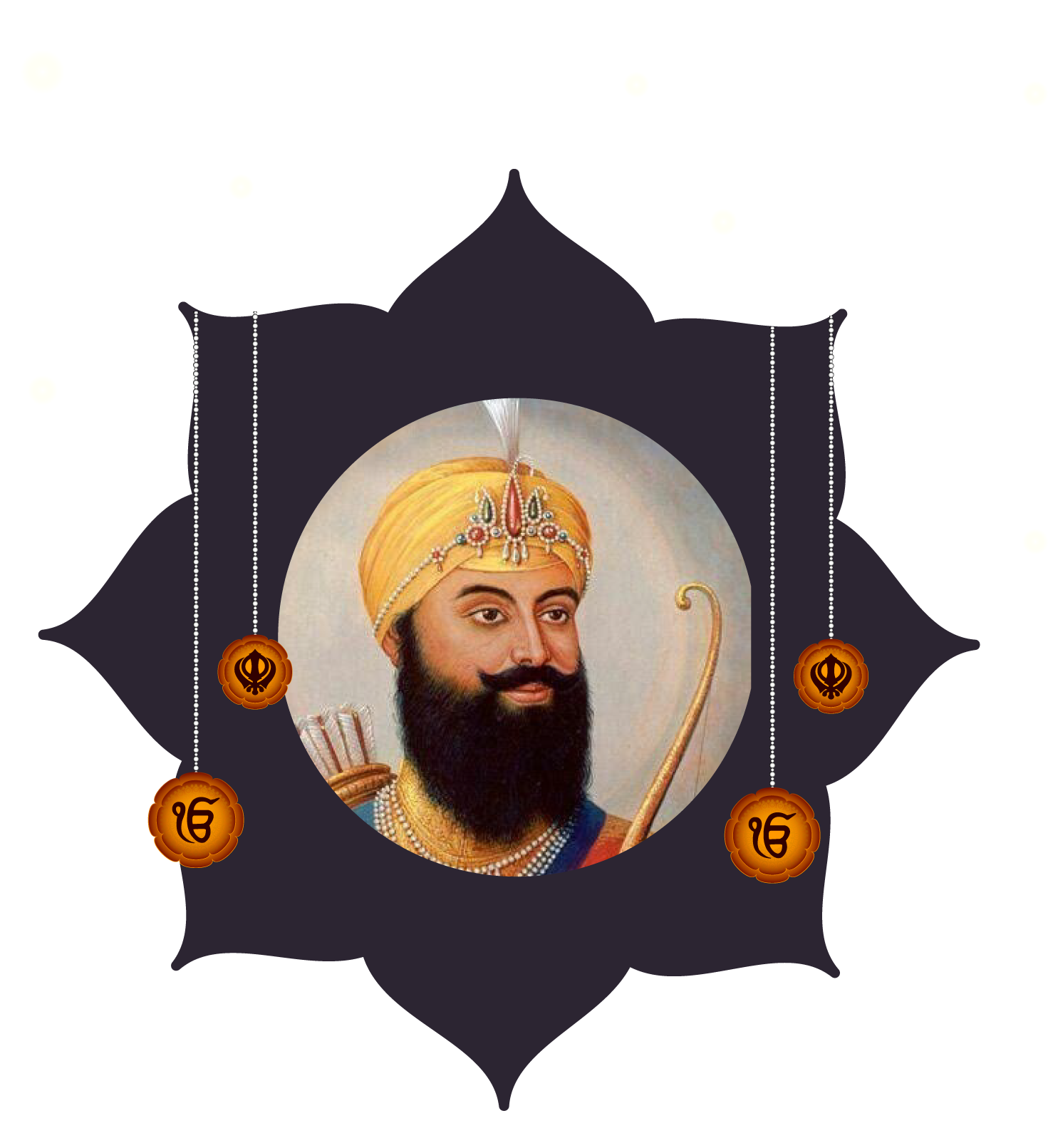
Sri Guru Hargobind Singh Ji revered as the sixth Nanak, was the sixth of ten Gurus of the Sikh religion. He had become Guru at the young age of eleven, after the execution of his father, Guru Arjan, by the Mughal emperor Jahangir.
Guru Hargobind Sahib Ji was born in Guru Ki Vadali, Amritsar Sahib on June 6, 1595 AD. Guru Hargobind Sahib Ji was the only child of Fifth Sikh Guru Guru Arjan Dev Ji and Mata Ganga Ji. Guru Hargobind Sahib had three wives, Mata Damodari Ji, Mata Marvahi Ji, and Mata Nanaki Ji, with whom he had six children. Mata Damodari Ji gave birth to Baba Gurditta Ji and Bibi Veero Ji, Mata Marvahi Ji and Baba Atal Rai Ji gave birth to Baba Suraj Mal Ji and Baba Ani Rai Ji, and Mata Nanaki Ji gave birth to Guru Tegh Bahadur Ji.
Guru Arjan Dev Ji prioritised Guru Hargobind Ji's education from an early age. Baba Buddha Ji and Bhai Gurdas Ji provided Guru Ji with spiritual and physical training. Guru Ji was taught horseback riding, weaponry, and martial arts by Baba Buddha Ji. Bhai Paraga Ji and Bhai Ganga Sehgal Ji, two great warriors, taught Guru Ji how to fight. Guru Arjan Dev Ji's brother, Prithi Chand, was relieved that Guru Ji did not have a child so that he could take over the Gurgaddi (guruship). As a result, when Guru Hargobind Sahib Ji was born, he was deeply disappointed. As a result, Prithi Chand attempted to assassinate Guru Hargobind Sahib Ji several times but failed each time.
Guru Arjan Dev Ji bestowed the Gurgaddi (guruship) on Sri Hargobind Sahib Ji, who was 9 years, 11 months, and 9 days old, on 15 May 1605 AD, at Kothri Sahib near Akal Takhat, Amritsar Sahib. Guru Hargobind Sahib Ji chose to wear a ruler's feather on their turban rather than an ascetic ornament. Guru Hargobind Sahib Ji adorned two Miri and Piri swords. They are known as Miri Piri de Malik (the King of the temporal and spiritual powers). During a congregation, Guru Hargobind Sahib Ji requested two swords from Baba Buddha Ji, one for each side of their body. The Sangat (congregation) was taken aback by this. No Guru had ever worn a sword, much less two. They would always wear two swords, according to Guru Ji. When Guru Ji lifted the first sword, he revealed that it represented Miri—temporal authority. Guru Ji raised the second sword to represent Piri—spiritual authority. Guru Sahib stated that Sikhs will continue to be a peaceful community that adheres to Guru Nanak Dev Ji's teachings. Guru Ji, on the other hand, desired that they be able to defend themselves against injustice and not be tyrannized. Guru Ji began to issue both political and spiritual directives.
The establishment of Sri Akaal Takht (the Throne of the Timeless Being), where all political, religious, and other matters of the Sikh Panth (community) are decided by the collective Panth, was one of the greatest moments during Their time. This practice is still practiced today. This represents the Khalsa Panth's sovereignty. Guru Sahib built Sri Akal Takht in front of Harmandir Sahib in 1609 AD. In Persian, Akal means timeless, and Takhat means throne. Guru Ji, Bhai Gurdas Ji, and Baba Buddha Ji collaborated on the building's map. It was finished in 20 days. Guru Ji raised the platform of the Akal Takht to 12 feet, defying then-Mughal emperor Jahanghir's rule that no one could sit higher than his three-foot throne. Guru Ji sat on this throne frequently to guide the Sangat and settle disputes.
Sri Hargobindpur was founded by Guru Ji. In Kiratpur Sahib, Guru Ji also established another preaching centre. Guru Ji spent the final ten years of his life in Kiratpur Sahib. Guru Ji passed on the guruship to Sri Har Rai Ji, their grandson. Guru Ji was Joti Jot (immersed in the Eternal Light) at Kiratpur Sahib on 28 March 1638 AD.